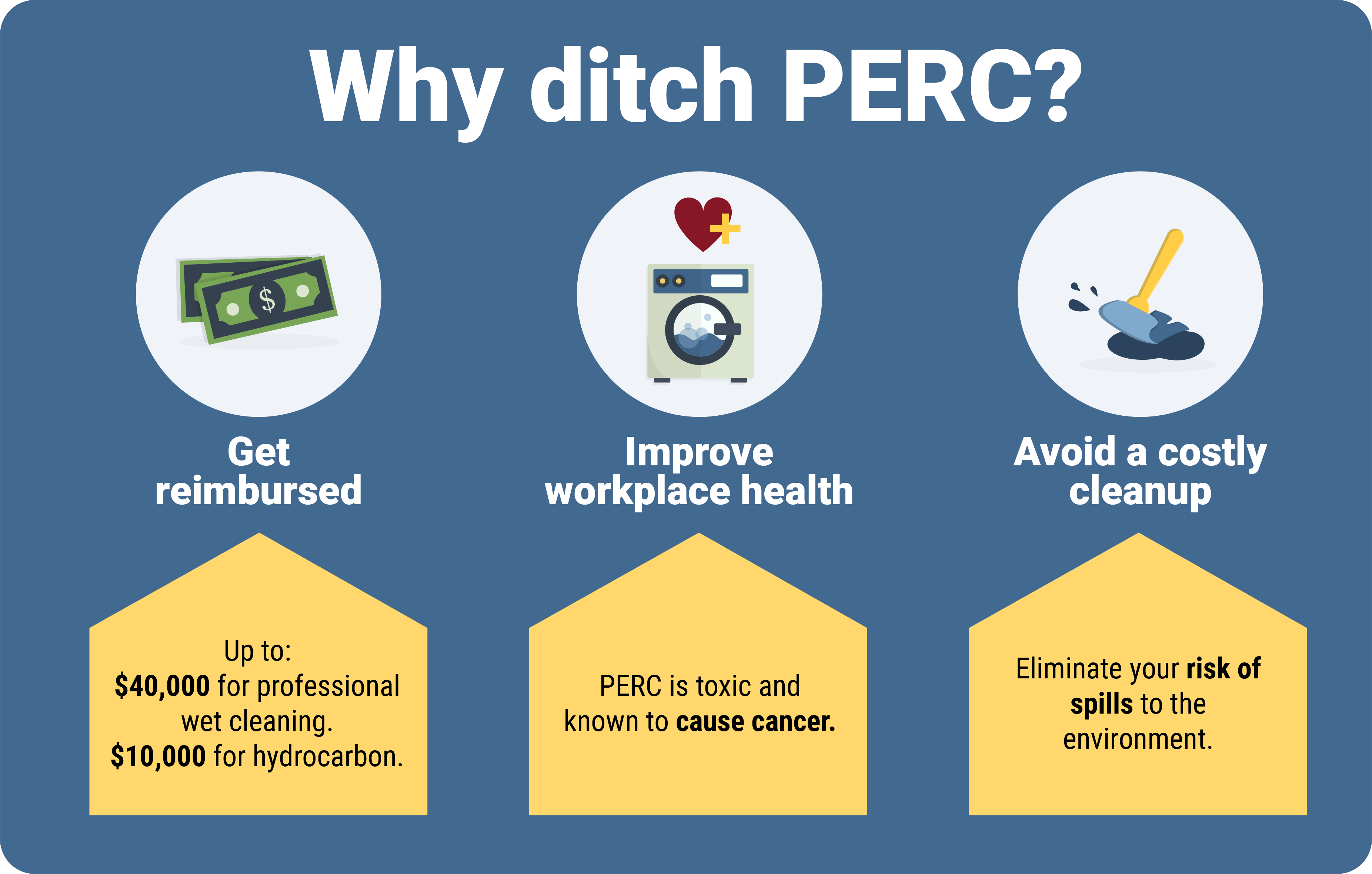Contact your local Pollution Prevention Assistance (PPA) representative to see if you qualify.
You must fill out and submit our PERC Equipment Replacement Voucher form, which you can only get from your PPA representative. To qualify for reimbursement, follow these steps:
- Schedule your PPA representative for a technical assistance visit. During this visit, you can sign up for the program by completing the first section of the PERC Equipment Replacement Voucher.
- Arrange your own financing to purchase and replace your equipment.
- Schedule your PERC machine decommissioning by emailing our Product Replacement Program team. We must be on-site to witness your decommissioning process from start to end.
- Lastly, meet once more with your PPA representative to finalize your paperwork.
We cannot guarantee financial assistance for any purchases made without Ecology approval. If you plan to participate in this program, contact your PPA representative for more information.
Professional wet cleaning is the safest alternative cleaning method. It uses water and detergents to effectively clean all types of fabrics, including “dry clean only” fabrics, according to businesses who have already converted. It is our preferred method because:
- It is the safest method.
- It eliminates hazardous waste.
- Dry cleaners could see lower operating costs because it can reduce energy and water use.
For dry cleaners who prefer a solvent-based system, we recommend hydrocarbon solvent cleaning systems. Choosing hydrocarbon solvent:
- Replaces aging PERC machines with newer and safer equipment.
- Poses less environmental impact compared to PERC.
However, it is not our preferred method because:
- Even when operated correctly, hydrocarbon machines often produce dangerous wastes (e.g., sludge or "still bottoms").
- These solvents are combustible and can be a fire hazard.
If your business chooses hydrocarbon, we recommend using the list from Toxics Use Reduction Institute’s (TURI’s) PERC Alternative Assessment Information.
Funding for this program comes from our Product Replacement Program. Made possible by the Washington Legislature, this program identifies the most problematic chemicals impacting our state. It then provides reimbursement funding, collection and disposal services, and other opportunities to help business owners transition to less toxic options.


